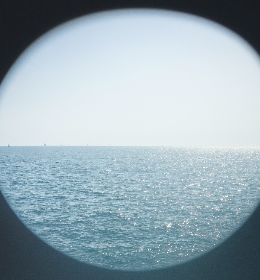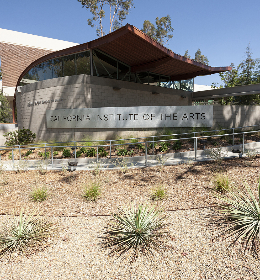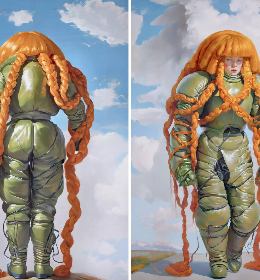A shortlisted finalist for this year's Sobey Art Awards - the most significant distinction for young Canadian artists for which the winner will be announced at the National Gallery of Canada on November 14 - she now produces work in form of video, installation, sound and sculpture.
Making art has allowed Kiwanga to transmit knowledge, or rather deconstruct systems of knowledge, in a way that academia didn’t allow for. However, instead of simply creating objects, destined for the most part for privative appropriation, Kiwanga hopes for her work in its various forms, to become moments of exit; that is, situations or experiences that provide relief from the systems of experience that we are normally bound by.
One ongoing project, ‘Flowers for Africa’, conceived during a trip to Dakar, Senegal, where she researched moments of post-colonial independence through local public archives, uses floral installations as silent witnesses to such historical moments. In many of the archival images of ceremonies and meetings, where men shake hands, Kiwanga noticed the perpetual presence of flowers in the background. Not only does the recreation of floral installations reactivate an irretrievable historic moment, but also the organic matter which slowly decays over its period of exhibition, attests to the perpetual flux of the world, serving as a reminder of the fallibility and incomplete fixity of the archive. Her more recent work ‘Desire Paths’ - currently on show at Galerie Jerome Poggi in Paris as part of the group show ‘The Border is a State of Mind’ - follows similar reflections on the tension between fixity and movement, however it is articulated here in a more material matter; a printed silk sheet overlays a rebar grid. The vector images that gild the silk are taken from aerial photographs that document trails taken by people moving outside prescribed pathways of urban planning. It is a work that ties together many themes within Kiwanga’s practice; technologies of surveillance, escape from established systems and the doubling of perspectives.
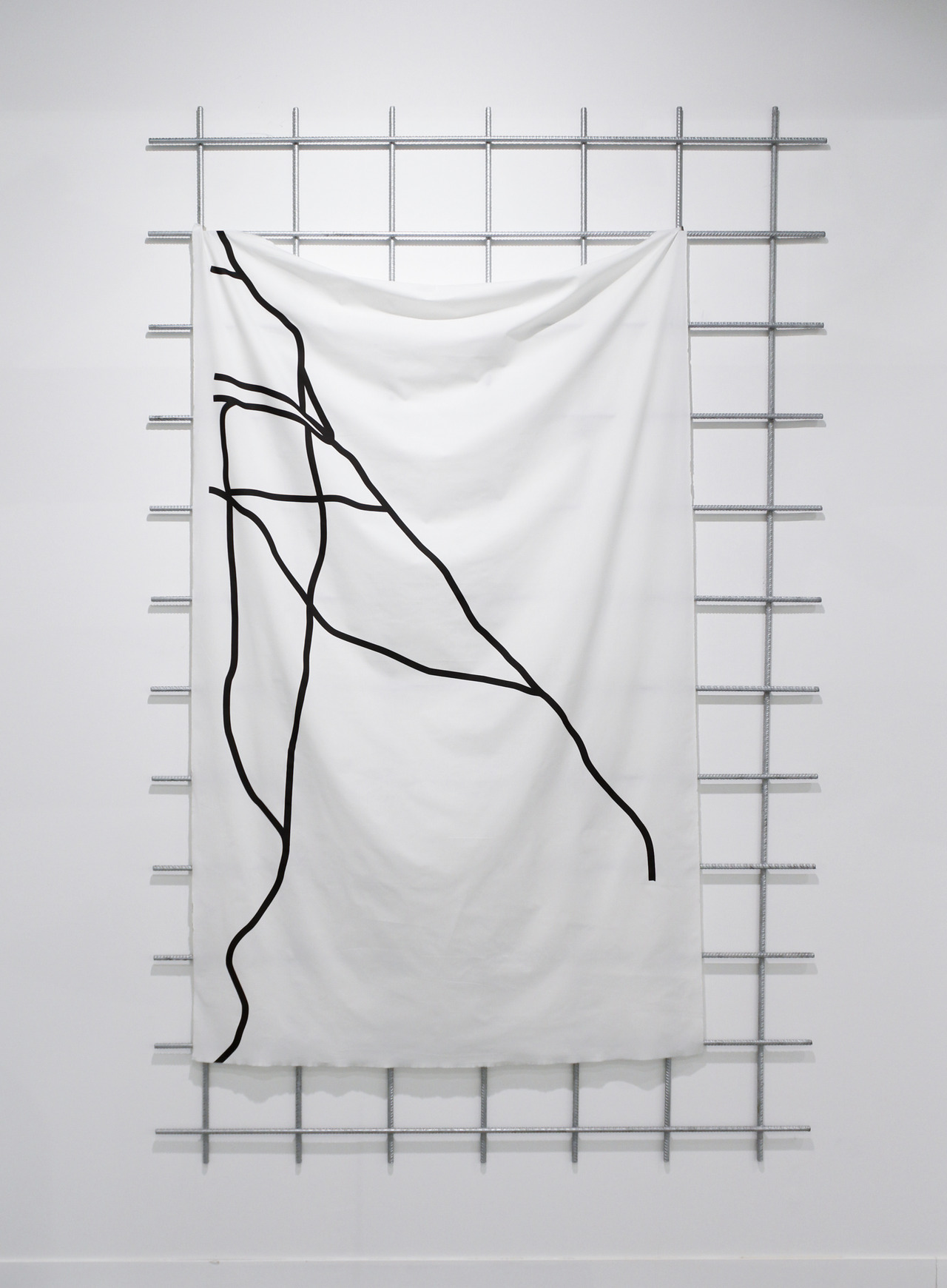
Kapwani Kiwanga, Desire Path : Rosscarrock, 2018, Toile en coton imprimée et maillage en fer, 252 x 151,5 cm, Crédit Aurélien Mole, © courtesy, Galerie Jérôme Poggi, Paris
You speak about your work in terms of exit strategy, and you also talk about the expanded potential for the transmission of ideas with having an art practice, rather than an academic career. Can you talk about legibility and communication in your work and how that might relate to notions of strategy?
I don't know if I found communication a problem in academia, but more its structures that try to focus us into experiencing or understanding things in just one way, thereby creating a hierarchy of understanding. This means that some experiences are left aside or intentionally erased or silenced. This happens historically, with archive and that which is rewritten or omitted, but it also happens just through being in the world; we have certain modes of communicating. We tend to hone one medium of communication and ignore others. More sensual or affective ways of understanding things are often not taken particularly seriously. We've inherited a Cartesian divide. It's quite a violent thing to impose on people, to be rational, whatever that means.
Instead of reproducing the same power structures, I try to subtly free myself from that whilst also trying to develop a form which corresponds to this overcoming of power imbalance. This could be achieved by challenging our sense of scale, by placing one’s body close to a sculpture, or it could be achieved by presenting different perspectives. A lot of my work has two or more distinct elements, and depending upon where you are positioned you are going to see the piece differently. That reverse or recontextualisation is important. There is always a flux. Things are not fixed or stable. I try to place our common sense on rocky ground.
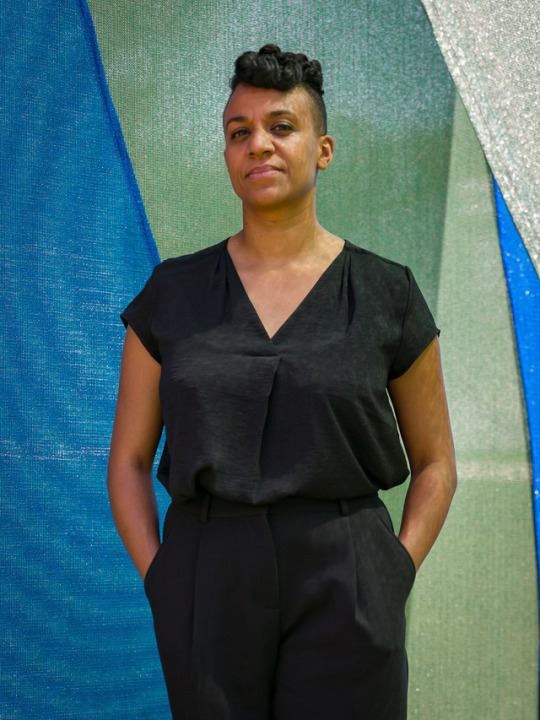
Kapwani Kiwanga, Shady, 2018, Frieze, New York, 2018, Randall's Island Park, New York City.
Crédit, Mark Blower. © courtesy, Galerie Jérôme Poggi. Paris
And can you explain how this functions as an exit strategy?
The idea of an exit strategy for me is proposing different ways of seeing, meaning and being. If you can be in a space in a way that isn't replicating the authoritative power asymmetry that rules most spaces as we know them now, and feeling this or experiencing this corporeally, it is a way to exit. I think the work of fiction and story-telling however are other means of developing exit strategies; I do a lot of performance-conferences, and these are other ways of imagining different futures. The work isn't there just to be consumed. It's not about possession. That's my problem with objects generally. Making objects makes me wonder if we really need another object in the world. Making objects often means possession. Installation or sound is a bit more slippery and allows us to move past the question of possession.
You have made a conscious choice to use the language of art rather than the language of academia in order to transmit ideas. Yet these performance-conferences that you refer to still use certain modes of academic communication within your artistic practice. Is this a deliberate action?
Definitely. These kinds of practices are born from a desire to queer that particular format of transmission from expert to those who hope to learn. It comes from a frustration of the authoritative and non-univocal knowledge production I've sometimes experienced. I took this practice and used the structure as it is — the same tonalities, the same turns of phrase — and I just insert things differently. The structure itself doesn't change but the content is freed up to a degree within that. I also think it engages the public in a way in which they become aware of the construction of knowledge production.
Often when we are being told a story in the language we always hear, we are not always aware of the systems at work or how constructed it is. This format is a way of emphasising that all narratives are constructed and that all facts are not truths.
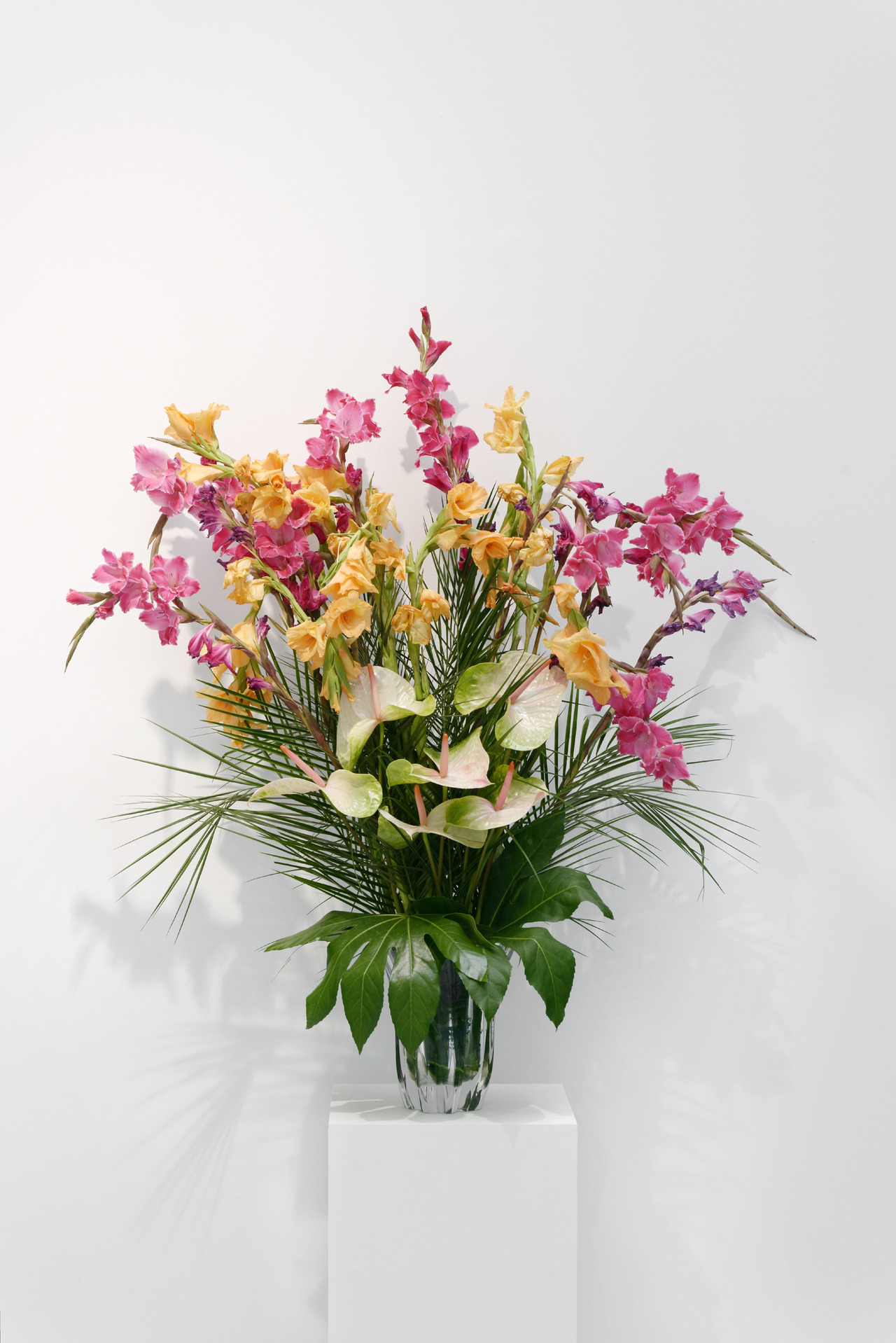
Kapwani Kiwanga, Flowers for Africa: Ivory Coast, 2014, Protocole écrit et signé par l'artiste, documents iconographiques, Dimensions variables, Crédit Aurélien Mole, © courtesy, Galerie Jérôme Poggi, Paris
Performance conference is just one mode among many in your practice, though. To what degree do you see your work as continuous?
I'd say that there is always a question of power that is present. It emerges in different ways: as power itself replicates and manifests in different ways, so does my work. On one hand I think my work looks at the history of power, its misuse and its asymmetries; but I'm also interested in resistance and strategies of dealing with power.
Do you perceive these moments of exit as moments of resistance?
I think creating exit strategies is the only way for me to do what I do. Otherwise I'd just feel as if I were replicating things that I find complicated. It can't just be critique either. It must be something that gets us out of these contexts somehow. That is, if one wants to. Of course some people don't care, or for some people the current mode of functioning serves them somehow, but that's a question of privilege. But for me it's the only honest way I can work.
I'm always looking at structures. I go backward, I try to unearth the specific tools, the specific laws, the colours or spaces that are instrumentalised or weaponised to this, that or whatever. Understanding the structure and understanding how that has been assembled or obscured somehow is important. But I am also looking at how people resisted these elements, how they survived it or found ways out.
Jessica Saxby





